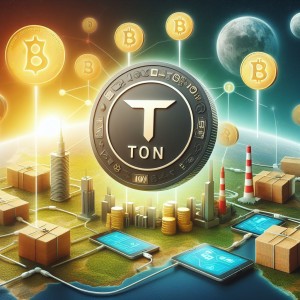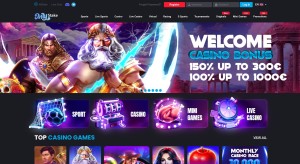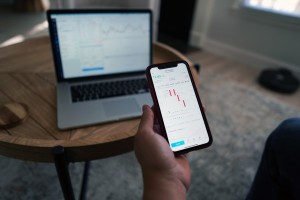AssetStream is a microfinancing peer-to-peer platform built on the blockchain. Integrating the best features of dynamic blockchain technology, it merges an existing network of lenders and their professional skills in microfinancing and incorporates the local legal structure for enforcement of debt collection in case of default.
AssetStream is microfinancing with a heart. Unlike many microfinance platforms and institutions that see an opportunity to make money out of the poor, AssetStream’s goal is to empower the unbanked to overcome poverty, and it’s attracting a massive following among the 2 Billion globally, mainly in Southeast Asia.
Sounds interesting? Here are matter-of-fact answers to questions posed to AssetStream Team, Thanin Phiromward, Founder & CEO, Ken Phiromward, Head of Strategy and Didier Bosmans, Head of Communications.
How did you get into this?
Like all stories about startups, a spark must be lit up first. The instigators that got the spark going were Tun and Didier when they discussed the difficulties of obtaining credit when working overseas. Ken and Thanin further refined the idea and saw there was definitely potential in solving the problem of obtaining credit.
It did not take long for us to realize that anyone who doesn’t fit exactly in the box created by financial institutions will have difficulties not only in obtaining credit but much more. SMEs that need funds to grow their enterprises are rejected when applying for small loans by financial institutions even though they have successful businesses.
The unbanked gets the brunt of rejections as they don’t have access to any financial service and therefore, are the most vulnerable. Their lack of credit history disqualifies them from using a credit tool for paying medical bills or tuition fees. Informal loan sharks are their last resort because of easy access but at heavy interest.
We believe that everyone should have access to credit. That is why after months of refining our idea, AssetStream became technically viable and ready to enter the world.
Do you have any competitors that are centralized, and if so, what is stopping them from doing the same thing?
When you look at the Southeast Asian (SEA) market, there are 264 million people who are unbanked. For them, it is nearly impossible to borrow from registered financial institutions.
There are two main reasons why it is nearly impossible for them. One, they cannot provide collateral for the loan. Two, their income is not stable and not predictable enough for traditional financial institutions, which only forces them to turn to unregulated loans.
Unregulated loans are like a “poison chalice” for borrowers. These loans provide them with easy money when they need it, but will poison them with extremely high-interest rates.
A 2016 study about informal loans in our pilot market, Thailand – conducted by the Fiscal Policy Office – revealed that there is an estimated outstanding debt of informal loans of 86 billion baht (2,7 billion USD).
Comparing this data with the regulated debt market in Thailand, we see the overall debt increasing. In Q1 of 2018, the outstanding debt for households was THB12.17 billion (382M USD) which is 5.2% higher compared to the same period in 2017.
One thing is clear, the informal loan market is huge, which means there is a big market for us to let the unbanked make the switch from informal loans to formal loans.
Currently, the AssetStream loan capacity for Thailand is limited to the hard cap of 21M USD (670M THB). However when the market demand grows, we are able to satisfy the needs and grow with the market.
Commercial banks and other centralized financial institutes have largely ignored the unbanked because of the high operating costs. But new technologies like mobile banking are making those companies slowly shift their attention towards the rural population.
We can only encourage this shift as it will provide more people with financial inclusion in this vastly underserved market. Together, we can increase financial inclusion and fight against informal loans.
What are the biggest challenges you expect to face and how do you plan to overcome these challenges?
Our biggest challenges would be keeping the NPL rate as low as possible and to keep our lenders happy.
To achieve this low NPL rate we developed our own credit rating system and partnered with CreditOK. This partnership will strengthen our credit rating system by providing us with an analysis of the borrower. Constant monitoring and enriching the system with new data will lower the NPL rate.
Keeping our lenders happy will be a balancing act between providing the lenders on one hand, with worthwhile interest rates and on the other hand, keep the platform attractive enough to borrowers to utilize AssetStream.
How about the global institutionalized moneylenders – are they also part of your ecosystem?
Currently, we do not work with any global institutionalized moneylender. Our focus is mainly partner with local entities to reach the last mile as they have already established a network to reach our end-users. These partnerships allow us to serve the market better as well as allow us to utilize local legislation in case of default.
We believe that currently, the best and fastest approach towards the unbanked population is through local partnerships. However, while the market further develops, we might partner up with a global institutionalized moneylender who shares the same vision and values as ours.
Is a system already in place for quick adaptation of the ecosystem?
When developing our platform and business model we took the experience of the lender and the borrower into account by providing the easiest procedures. We believe that lenders will adapt to the platform quite quickly as the concept of P2P lending has been existing for quite some time. There are already several success cases of online lending.
The experience for our borrowers will not be much different for them than what they have been used to. We want our borrowers to ease into the platform by providing them with the traditional feeling of signing a contract with the local agency and gradually ease into more technology.
People nowadays become more and more familiar with online services, such as shopping, banking and transportation like Grab. It will not take long before the population is familiar with Fintech, which is upcoming not only in Thailand but the whole of Southeast Asia.
What would be your BEST strategy to reach out fast to the unbanked population who do not possess any collateral?
The best strategy to reach the unbanked population fast is to partner with those who already have the network to reach the unbanked population.
This is also how we want to reach the unbanked population. The partnerships we form strengthen both sides and benefits everyone in the chain.
The tokens that we created are utilized as collateral for the borrowers. The lender actually provides the collateral for the borrower and receives a reward for it.
How about bad debts? Will you offer debt relief?
Bad debt is something we try to prevent at all costs. But if it occurs, we have a system set up that will enable enforcement of local laws and regulations to compel the borrower to pay his debt.
The debt collection system consists of 4 phases: 1. Late fee, 2.Negotiation, 3.Legal Action, 4.Non-performing loan.
When the late fee phase starts, a fee at 15% per annum will be charged on the outstanding sum. This fee will continue through all the phases until the borrower has paid off the outstanding debt.
If the borrower has defaulted on a loan for two consecutive months the negotiation phase will commence where the local agency will attempt to renegotiate repayment terms with the borrower.
The next phase starts when the borrower has not paid back any outstanding loan or if negotiations have failed. Now the local agency together with AssetStream will consider taking legal action to recover the outstanding sum of money.
Lastly, in the event no legal action has commenced or recovering the full loan was unsuccessful, the lender’s AST will be unlocked and used to purchase the contract from the local agency. This will allow the local agency to liquidate the AST to recover its losses.
In the meantime, AssetStream will try to sell the loan contract to debt collectors and will give the money it recovers to the lender, less any fees, costs or expenses expended in the debt collection process
We also limit the negative effects even before a bad loan occurs. We do this by allowing lenders to only invest a maximum of 10% of the total loan amount.
What is your total addressable market (TAM) and what do you estimate is the max share your network will take?
The TAM is vast, just look at the Thai informal market size mentioned earlier. The Thai informal market alone is estimated to be 2,7 billion USD and Thailand is only one country in SEA.
This huge market tells us two things. One, we still have a lot of work to do complete our mission and remove informal loans from these statistics.
Two, we have room to grow and expand our service and push loan sharks out of the market.
How long do you estimate it will take for the network to launch and see adoption?
The adoption will happen quite rapidly. For example, we integrated our platform into Pico finance who already has a network set up to reach the last mile. In 2018, 49 million USD was borrowed from Pico Finance. With the Thai government increasing its efforts to crackdown informal loans, Pico Finance expects the demand for loans to double in 2019.
Besides the partnership with PICO finance, the platform will be open for SMEs after they got their rating and due diligence.
Do you see the possibility of a localized language version for different countries?
We actually localize the whole project to the operating region, as our business model allows us to operate in countries with varying laws and regulations.
Once our pilot in Thailand is a success, we will utilize the same methodology to expand to other regions.
Are you offering a guaranteed rate of return to investors?
We do not offer a guaranteed rate of return to investors. We provide them with an estimated return before they participate in a loan.
What countries cannot participate in your token sale?
AssetStream is an entity under the Estonian law. We want to reach out to as many people as possible. Although our platform is open to all nationals, please note that we are currently only operating in Thailand, which means that we only accept borrowers from Thailand. However, everyone other than nationals of the US and China can take part in the token sale.
Even though our platform is open to all nationals, we advise all users to inform themselves about their national laws and regulations as some governments have a different view on crypto and microfinance.
Thailand is only a pilot project of AssetStream as the team is already familiar with government laws and regulations. Like a new car for a test drive, AssetStream will undergo fine adjustments as the Token Generation Event gets underway.
For sure, everyone will be looking under the hood and giving their helpful comments and a smattering of naysayers. But for Thanin, Ken and Didier, there is no looking back as 2 Billion unbanked lives now hang on a delicate balance.
Visit the ongoing AssetStream Token Sale to learn more.





